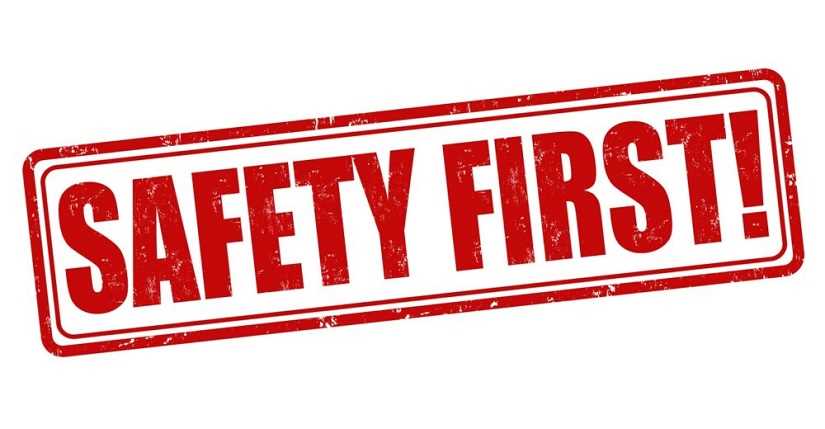Every business must support impactful and successful safety programs, especially businesses pertaining to the construction industry. Although, it is easier said than done to thoroughly implement safety procedures and sustain such a culture. Yet, workplaces must facilitate strong safety programs that will provide protection and ample support for all the employees associated with it. Hence, organizations need external help and adequate resources to develop an efficient safety culture, which would boost their safety programs and make them successful.
Why is a successful safety program mandatory?
The significance of an effective safety program at factories and workplaces is a well-established one that most industries acknowledge. Unfortunately, due to various reasons, most of them are not able to implement it throughout all levels. Managers and employees alike must comprehend that the company's ability to ensure everyone's safety depends largely on their capacity to design and hence implement the appropriate safety programs and improve upon the entire safety management procedures. Companies that prioritize employee safety view safety programs as a shared responsibility and approach these very strategically. This enables them to effectively implement them and enhance employee health and safety. It also equips them to handle all security vulnerabilities that may occur in the workplace.
List of Vital components
A comprehensive safety program is constructed by virtue of a few aspects within the organization. These elements have to be thoroughly understood and hence acknowledged in the case of each application. The approach might be different with respect to the situation, yet the application must be thorough. Let us go through the essential components that make an effective safety program.
- Managerial leadership
The management has a lot to put forth when it comes to planning a strong safety program for the organization. Their contribution includes several essential factors that would increase the effectiveness of the procedure. Any safety program includes a number of policies that must be specifically designed to address the concerning cause and thorough in its approach. The general rules implemented in these programs must all be there, but the crux of these programs relies on its specificity, and the management has a large impact on that.
The safety measures that are to be included and implemented have to be thoroughly looked upon by the management systems. Measures such as installing fall protection and lock-out devices must be tended to by the managerial group. Their task is to properly understand the requirements from the employees engaged directly at the factory floor and address their needs as much as possible through the safety programs they create.
- Assessing all hazards
Only when we know the threats that are looming at our workplace can we design protocols addressing them. Hence, proper assessment of hazards is a mandate. Safety programs must incorporate the following hazard assessments to negate all risks and vulnerabilities in operations.
- A yearly safety and health check that comprehends regular review and program audits by qualified personnel. This would help in recognizing the existing vulnerabilities and potential risks at the workplace. We recommend hiring a third-party professional to perform the annual checks.
- Employees must have a reliable procedure to report any potential hazards without having any fear or hesitation. They must also be responded to promptly.
- Continuous monitoring and maintenance of all active equipment daily.
- Any accidents or incidents concerning worker safety must be promptly investigated, and the root cause should be ascertained so that corrective actions can be taken.
- Proper Training
Ample training programs must be incorporated within the organization to ensure that all employees and managers understand the various implications of the safety policies and hence follow them adeptly. Employees are the ones most affected by any hazardous workplace situations. Hence they must undergo proper training so that each procedure and its vulnerabilities are known to them. This way, they would understand the situations where personal protective gear is required and not hesitate to use them.
- Equipped workplace
The workplace elements such as tools, equipment, facilities, etc. must all be inclined towards ensuring organizational health and cleanliness to negate all chances of physical hazards. The employer is in direct control of these workplace elements, and hence he or she must actively enhance these aspects in view of the safety protocols that are to be implemented.
- Humane actions
Finally, we come to arguably the most vital aspect that guarantees any safety program's success, the humane effort put behind it. In the end, it is the workers that are entrusted with following the protocols that are included in the safety programs. Their behaviour and actions must be directed towards the proper implementation of these protocols. Risky workplace behaviour must be avoided at all costs, and workers must ensure that their actions do not lead to any voluntary rejection of the policies.
Conclusion
All the above categories mentioned must be given equal importance and followed to ensure that the safety programs incorporated at the workplace come of any effect. Successful implementation of safety programs is the only way to avoid hazardous situations and unwanted losses.
If you want to learn more about safety programs, feel free to contact us at sales@loadmate.in, and our LOADMATE experts will be happy to assist you with it.



